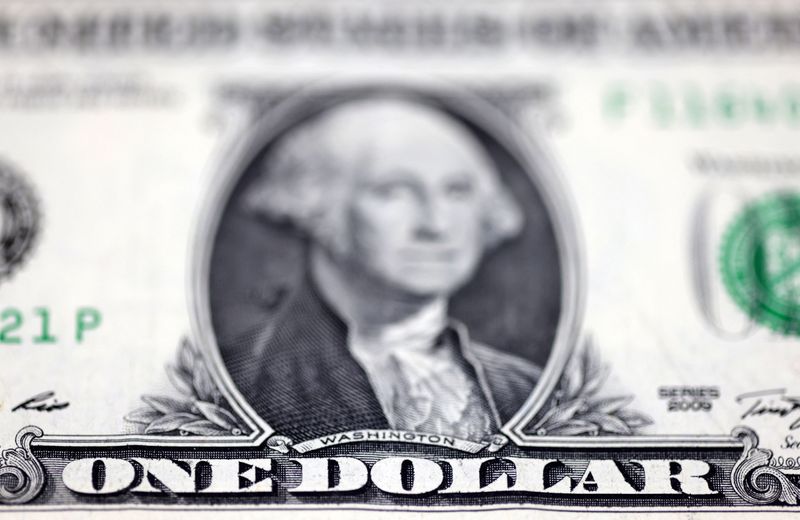© Reuters
Investing.com – The dollar slipped Monday, just days ahead of U.S. data expected to show easing inflation pressures, but ING warns against chasing the dollar lower as Treasury yields could have further room to climb at a time when lingering bets on a dovish Fed are running out of room.
With front-end U.S. treasury yields including the yield trading close to cycle highs and equities showing signs of instability, ING says, the dollar is in a “solid position to rebound from the current levels – especially given there isn’t much room for a further dovish re-pricing in the USD swap curve.”
The pricing out of Fed dovishness has pushed the 2-year yield to a fresh 52-week high on Friday, to pre-banking crisis levels seen in the spring.
The call comes just days ahead of fresh inflation data forecast to show easing price pressures, but that is unlikely to force markets to price out a July hike.
Traders are currently about 25 basis points of Fed tightening, but that is still short of the 50 basis points of the Fed’s projected 5.5% to 5.75% range.
The , which measures the greenback against a trade-weighted basket of six major currencies, fell by 0.33% to 101.61.
Ahead of the Fed blackout period next week, Fed members have continued to call for further tightening, with Cleveland Fed President Loretta Mester, a non-voting member, stressing the need for higher for longer rates to bring inflation down to the central bank’s 2% target.
“In order to ensure that inflation is on a sustainable and timely path back to 2%, my view is that the funds rate will need to move up somewhat further from its current level and then hold there for a while as we accumulate more information on how the economy is evolving,” Mester said in a virtual speech at the University of California, San Diego forum.
Short-Term joy, but long-term gloom
ING isn’t alone in its expectations for a dollar rebound.
A further rebound by the US dollar is still likely, Montreal-based Desjardins said in a note, though added that the eventual rate-cutting cycle expected next year to support the global economy would limit upside in the greenback.
“A more favourable economic environment in 2024, with interest rates falling, would be more conducive to the US dollar depreciating against several currencies,” it added.
Read the full article here













